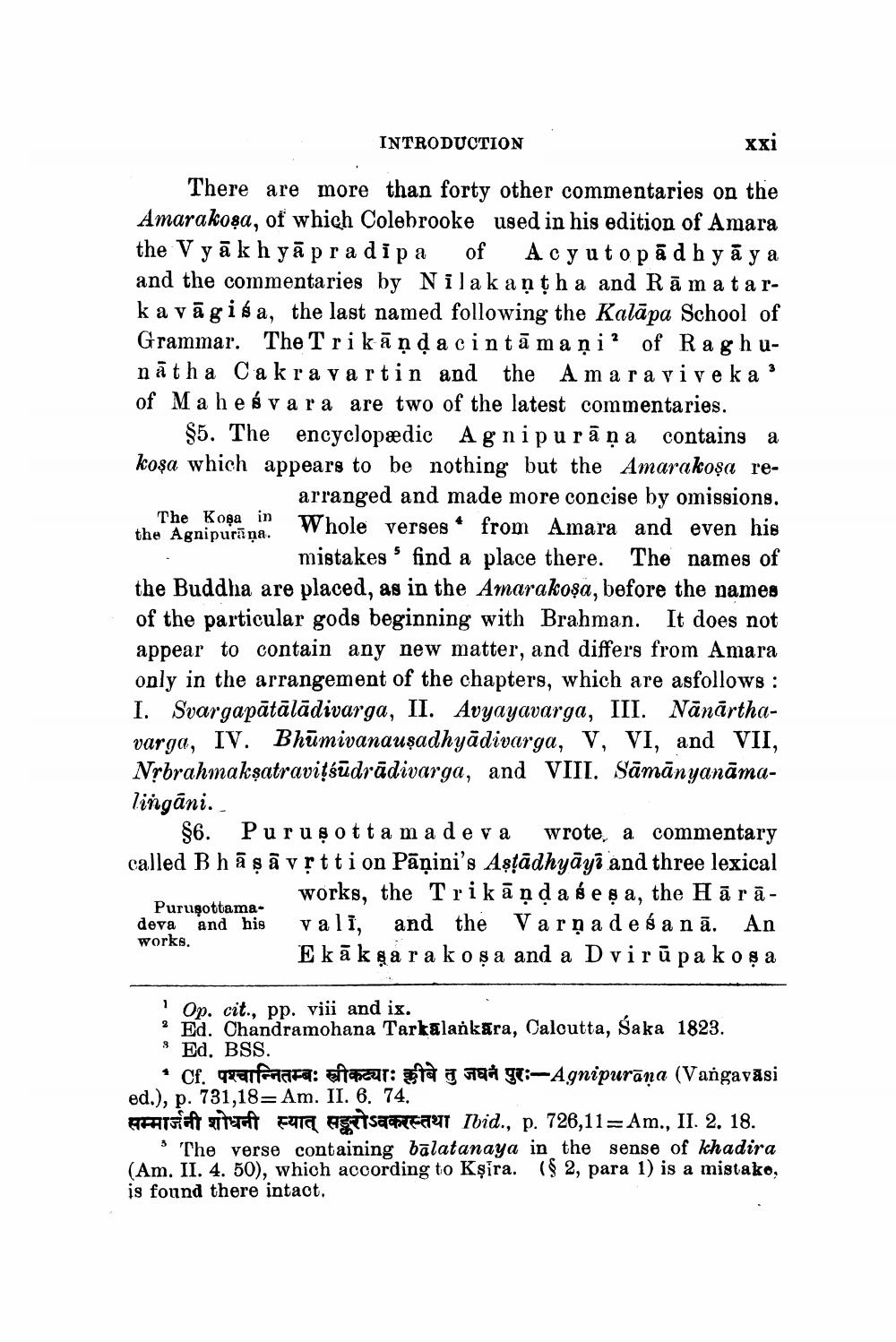________________
INTRODUCTION
xxi
There are more than forty other commentaries on the Amarakosa, of which Colebrooke used in his edition of Amara the V yā k h yāpra dipa of Acy utopādh yā y a and the commentaries by Nilakantha and Rāmatark a vāgis a, the last named following the Kalāpa School of Grammar. The Trikāņ da cintā maņi? of Ra g h unātha Ca kr a vartin and the Amar a vivek a : of Mahes va r a are two of the latest commentaries.
$5. The encyclopædic Agnipu rāņa contains a koşa which appears to be nothing but the Amarakoşa re
arranged and made more concise by omissions. The Koşain Whole the Agnipurāņa.whole verses Irom Amara and
mistakes ' find a place there. The names of the Buddha are placed, as in the Amarakoşa, before the names of the particular gods beginning with Brahman. It does not appear to contain any new matter, and differs from Amara only in the arrangement of the chapters, which are asfollows: I. Svargapātālādivarga, II. Avyayavarga, III. Nānārthavarga, IV. Bhūmivanauşadhyādivarga, V, VI, and VII, Nrbrahmakşatravițśūdrādivarga, and VIII. Sāmānyanāmalingāni.
$6. Puruş ottama de va wrote, a commentary called Bhāṣā vrtti on Pāṇini's Astādhyāyī and three lexical
works, the Trikāņ da seş a, the H ārā - dova and his vali, and the Varșa de sa nā. An
Ekā kg a r a kosa and a Dvirū pa kosa
Purugottama
works.
Op. cit., pp. viii and ix.
Ed. Chandramohana Tarkalankara, Caloutta, Saka 1823. » Ed. BSS.
* Cf. qualfaara: atacar: ita a fan gri-Agnipurāņa (Vangavasi ed.), p. 731,18= Am. II. 6. 74. Aparat saraft Futa Agatsaateat Ibid., p. 726,11=Am., II. 2. 18.
The verse containing balatanaya in the sense of khadira (Am. II. 4. 50), which according to Kșira. ($ 2, para 1) is a mistako, is found there intact.




